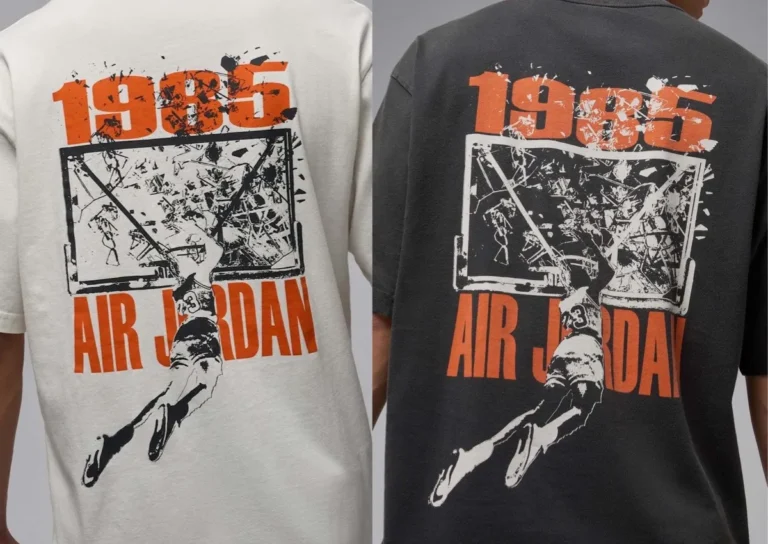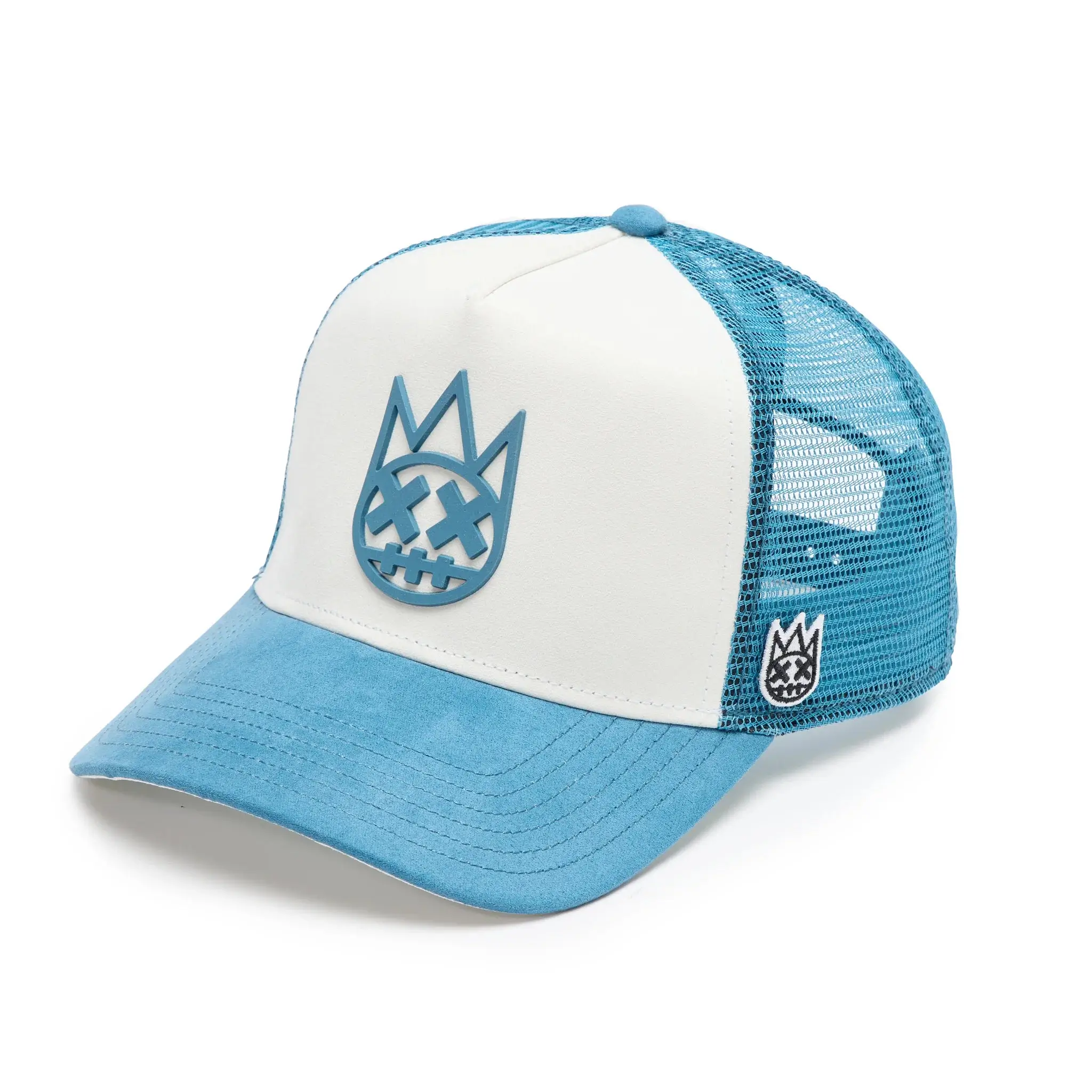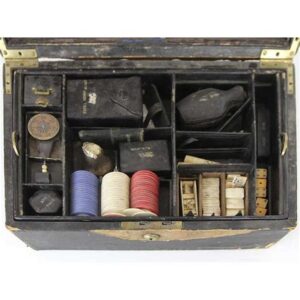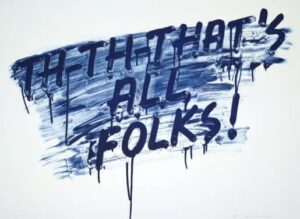Once upon a backboard-smashing time—August 26, 1985 to be exact—Michael Jordan descended upon Trieste, Italy, for a Nike exhibition game and did what only he could: he dunked with such force that the backboard exploded. It wasn’t a playoff game. It wasn’t Madison Square Garden. But it became mythic. Shards of glass rained down like confetti. Jordan, wearing a black-and-orange Stefanel Trieste jersey, stood under the broken rim like a deity of verticality.
That moment might’ve slipped into sneakerhead folklore if not for what happened three decades later. In 2015, Jordan Brand resurrected the memory—not through another YouTube anniversary tribute or throwback highlight reel, but through leather, laces, and orange-paneled perfection. The result: the Air Jordan 1 “Shattered Backboard.”
It wasn’t just a shoe—it was a legend reborn.
The Colorway That Told a Story
The original “Shattered Backboard” AJ1 took a page from the Trieste jersey Jordan wore that day. It wasn’t Bulls red and black. Instead, it was Starfish orange, set against black and white leather. While seemingly unorthodox, the colorway was instantly magnetic—because it was authentic. It had a backstory. And not just any story, but one of raw athletic force and unrepeatable spectacle.
Sneaker culture thrives on narrative. A shoe with a good story becomes more than gear—it becomes mythology for your feet. The “Shattered Backboard” was exactly that. Every inch of the sneaker reminded wearers of that moment in Italy: the orange nod to the jersey, the premium tumble of the leather, the black overlays like the shadows of a collapsing backboard.
The shoe wasn’t designed for mass appeal—it was designed for the initiated. Those who knew the backstory understood its power.
The 2015 Drop: Shockwaves and Sellouts
When it dropped in June 2015, the “Shattered Backboard” 1s didn’t immediately register as a mainstream must-have. But the details were too good to ignore. The leather quality was—by many accounts—better than any Jordan 1 released in years. The materials, usually a secondary consideration, took center stage. Sneaker forums buzzed. Instagram flexes multiplied.
Within weeks, the pair that once sat quietly on select store shelves became the holy grail of a new wave of sneaker purists. Resale prices climbed. Comparisons to OG Chicago 1s were thrown around with seriousness. The sneaker had become what every Jordan release dreams of becoming: an instant classic.
Spin-Offs and Alternate Universes
The success of the original opened the floodgates. Jordan Brand returned to the shattered well in 2016 with the “Reverse Shattered Backboard”—also known as the “Away” version. This time, the layout flipped: orange became the base, and white served as contrast. It was a strong release, but the reverence of the original loomed large.
In 2019, another iteration surfaced—the “Shattered Backboard 3.0.” This time, it divided opinion. The color blocking leaned more toward patent-like gloss, with a crinkled, almost vinyl upper that was meant to mimic the texture of broken glass. While some embraced its experimental shine, others found it a departure from the leather-luxe narrative that made the 2015 original so revered.
Still, these iterations proved the staying power of the concept. The “Shattered Backboard” wasn’t just a shoe now—it was a franchise within the Jordan 1 lineage.
From Court to Culture
Perhaps the most powerful aspect of the “Shattered Backboard” is how it managed to do what few colorways can—transcend sport without losing its heritage. While many Jordans are built around the NBA arc of Michael’s legacy—the Chicago years, the championships, the ‘Flu Game’—this one was international, obscure, and niche. That gave it underground credibility.
And that credibility leaked into fashion, music, and design. Artists wore them. Stylists started matching burnt orange into lookbooks. Even if you didn’t know the story of Trieste, the shoe’s bold visual energy made it wearable art.
Why It Still Matters
Ten years after its release, and nearly 40 years after the dunk, the “Shattered Backboard” AJ1 still feels fresh. That’s because it nailed something many modern drops miss: meaning. In a saturated world of collabs, limited editions, and algorithm-designed hype, this was a sneaker born from real-life performance poetry.
It reminds us of a time when greatness wasn’t curated—it was just witnessed. When Jordan didn’t need a social media campaign or a launch teaser—just a ball, a rim, and one transcendent leap.
And the shoe, like the story, keeps rising in value—not just financially, but symbolically.
Legacy Through Leather
Today, collectors prize the original 2015 version as one of the best Jordan 1s of the modern era. Its resale prices remain high, and its presence at sneaker conventions is rarer and more revered each year. It is not a shoe to be worn lightly. It is not a shoe for the unaware.
It is a shoe for the believers. The students of the Jordan mythos. Those who understand that behind every great sneaker lies a moment—one that cracked the glass, left a mark on the game, and echoed far beyond the court.
No comments yet.








